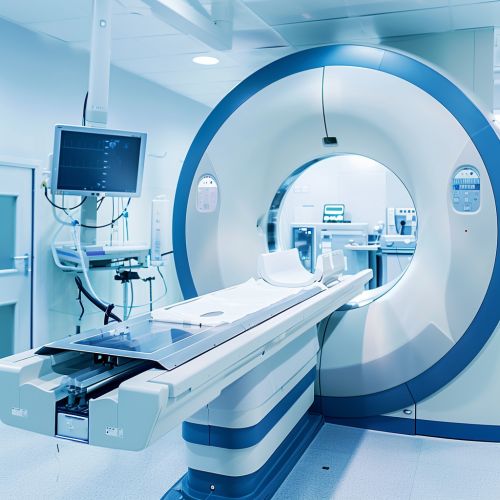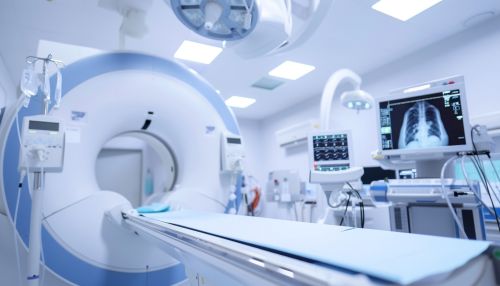Measurement of Syndromes
Introduction
The measurement of syndromes is a complex and multifaceted process that involves the identification, quantification, and analysis of various symptoms and signs that collectively characterize a specific syndrome. Syndromes are defined as a set of medical signs and symptoms that are correlated with each other and often associated with a particular disease or disorder. The accurate measurement of syndromes is crucial for diagnosis, treatment planning, and research. This article delves into the methodologies, tools, and challenges involved in the measurement of syndromes, providing a comprehensive and detailed exploration of the topic.
Definition and Classification of Syndromes
Syndromes are typically classified based on their etiology, pathophysiology, and clinical presentation. The classification can be broadly divided into genetic syndromes, infectious syndromes, metabolic syndromes, and idiopathic syndromes. Each category has distinct characteristics and requires specific measurement approaches.
Genetic Syndromes
Genetic syndromes are caused by abnormalities in an individual's genetic material. Examples include Down syndrome, Turner syndrome, and Marfan syndrome. The measurement of genetic syndromes often involves genetic testing, karyotyping, and molecular diagnostics to identify chromosomal abnormalities or gene mutations.
Infectious Syndromes
Infectious syndromes result from infections caused by bacteria, viruses, fungi, or parasites. Examples include acquired immunodeficiency syndrome (AIDS) and toxic shock syndrome. Measurement involves microbiological tests, serological assays, and imaging studies to detect the presence of infectious agents and assess the extent of infection.
Metabolic Syndromes
Metabolic syndromes are characterized by a cluster of conditions that increase the risk of cardiovascular disease and diabetes. Examples include metabolic syndrome and Gaucher disease. Measurement involves biochemical tests, such as blood glucose levels, lipid profiles, and enzyme assays, to evaluate metabolic function.
Idiopathic Syndromes
Idiopathic syndromes have no identifiable cause. Examples include irritable bowel syndrome and chronic fatigue syndrome. Measurement relies on clinical evaluation, patient-reported outcomes, and exclusion of other potential causes.
Diagnostic Criteria and Tools
The measurement of syndromes requires the use of standardized diagnostic criteria and tools. These criteria are often developed by expert panels and are based on a combination of clinical features, laboratory tests, and imaging studies.
Clinical Features
Clinical features are the observable signs and symptoms that characterize a syndrome. These include physical examination findings, patient history, and symptomatology. Standardized clinical assessment tools, such as the Mini-Mental State Examination (MMSE) for cognitive syndromes, are used to quantify these features.
Laboratory Tests
Laboratory tests are essential for the measurement of biochemical, hematological, and immunological parameters. These tests provide objective data that support the diagnosis and monitoring of syndromes. Examples include complete blood count (CBC), liver function tests, and polymerase chain reaction (PCR) assays.
Imaging Studies
Imaging studies, such as X-rays, computed tomography (CT) scans, magnetic resonance imaging (MRI), and ultrasound, are used to visualize internal structures and identify abnormalities associated with syndromes. These studies provide critical information for diagnosis and treatment planning.


Measurement Scales and Instruments
Various measurement scales and instruments have been developed to quantify the severity and impact of syndromes. These tools are essential for clinical assessment, research, and outcome evaluation.
Severity Scales
Severity scales are used to quantify the intensity of symptoms and the overall impact of a syndrome on a patient's health. Examples include the Glasgow Coma Scale (GCS) for traumatic brain injury and the Apgar score for newborn assessment.
Quality of Life Instruments
Quality of life instruments assess the impact of a syndrome on a patient's overall well-being and daily functioning. Examples include the Short Form Health Survey (SF-36) and the World Health Organization Quality of Life (WHOQOL) questionnaire.
Functional Assessment Tools
Functional assessment tools evaluate a patient's ability to perform daily activities and maintain independence. Examples include the Barthel Index for activities of daily living (ADL) and the Functional Independence Measure (FIM).
Challenges in Measurement
The measurement of syndromes presents several challenges, including variability in clinical presentation, the subjective nature of some symptoms, and the need for multidisciplinary approaches.
Variability in Clinical Presentation
Syndromes often present with a wide range of symptoms that can vary significantly between individuals. This variability complicates the development of standardized diagnostic criteria and measurement tools.
Subjective Nature of Symptoms
Many syndromes involve subjective symptoms, such as pain, fatigue, and mood disturbances, which are difficult to quantify objectively. Patient-reported outcome measures (PROMs) are often used to capture these symptoms, but they rely on patient self-reporting, which can be influenced by various factors.
Multidisciplinary Approaches
The measurement of syndromes often requires input from multiple healthcare professionals, including physicians, nurses, psychologists, and social workers. Coordinating these efforts and integrating data from different sources can be challenging.
Advances in Measurement Techniques
Recent advances in technology and methodology have improved the measurement of syndromes. These advances include the development of biomarkers, the use of artificial intelligence (AI) and machine learning, and the integration of electronic health records (EHRs).
Biomarkers
Biomarkers are biological molecules that can be measured to indicate the presence or severity of a syndrome. Examples include C-reactive protein (CRP) for inflammation and amyloid-beta for Alzheimer's disease. Biomarkers provide objective data that can enhance diagnostic accuracy and monitor disease progression.
Artificial Intelligence and Machine Learning
AI and machine learning algorithms can analyze large datasets to identify patterns and predict outcomes. These technologies are being used to develop predictive models for syndrome diagnosis and to personalize treatment plans based on individual patient data.
Electronic Health Records
EHRs integrate patient data from various sources, providing a comprehensive view of a patient's health status. EHRs facilitate the measurement of syndromes by enabling real-time data analysis, tracking patient outcomes, and supporting clinical decision-making.
Ethical Considerations
The measurement of syndromes raises several ethical considerations, including issues related to privacy, informed consent, and the potential for stigmatization.
Privacy
The collection and analysis of patient data for syndrome measurement must adhere to strict privacy regulations to protect patient confidentiality. Healthcare providers must ensure that data is securely stored and only accessible to authorized personnel.
Informed Consent
Patients must provide informed consent before undergoing diagnostic tests and participating in research studies related to syndrome measurement. Informed consent involves explaining the purpose, risks, and benefits of the procedures and obtaining voluntary agreement from the patient.
Stigmatization
The diagnosis and measurement of certain syndromes can lead to stigmatization and discrimination. Healthcare providers must be sensitive to these issues and take steps to minimize the potential for negative social consequences.
Future Directions
The field of syndrome measurement is continually evolving, with ongoing research aimed at improving diagnostic accuracy, developing new measurement tools, and enhancing patient outcomes.
Personalized Medicine
Personalized medicine involves tailoring medical treatment to the individual characteristics of each patient. Advances in genetic testing, biomarkers, and AI are driving the development of personalized approaches to syndrome measurement and management.
Telemedicine
Telemedicine uses telecommunications technology to provide healthcare services remotely. Telemedicine can facilitate the measurement of syndromes by enabling remote monitoring, virtual consultations, and real-time data sharing between patients and healthcare providers.
Big Data and Analytics
The use of big data and advanced analytics is transforming the measurement of syndromes. Large-scale data analysis can identify trends, uncover new insights, and support evidence-based decision-making in clinical practice and research.
